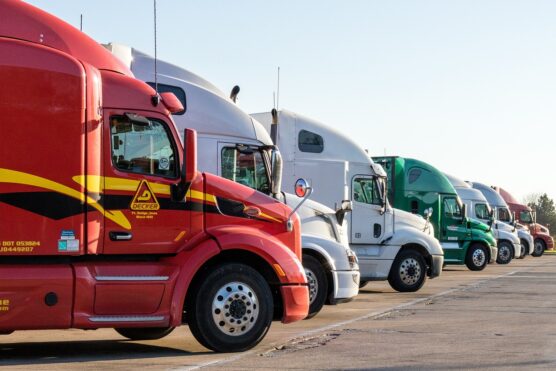The U.S. Department of Transportation awarded $102 million for a multi-state West Coast corridor that will boost an emissions-free freight movement of goods locally, regionally, nationally and internationally.
California along with Oregon and Washington have secured $102 million to install charging stations and hydrogen fueling stations for trucks along Interstate 5 and other key freight corridors.
“The Biden-Harris Administration is helping California build our clean transportation infrastructure, faster. This latest federal funding is another opportunity for America’s exports to look west for moving freight while fighting our climate crisis.” Said California Gov. Gavin Newsom.
The West Coast Truck Charging and Fueling Corridor Project is an innovative and collaborative multi-state effort to accelerate the adoption of zero-emission vehicles in the trucking and logistics industries. The funding comes from the federal Infrastructure Investment and Jobs Act of 2021.
“Focusing on economic prosperity and climate action allows us to combine our sustainability and equity efforts while improving our nation’s transportation network,” said Caltrans Director Tony Tavares. “This latest federal funding is another opportunity for America’s exports to look west for moving freight while combatting climate change.”
The award will result in new, publicly accessible charging stations and hydrogen fueling stations. These stations will support the emissions-free movement of goods locally, regionally, nationally and internationally. Construction of the new charging stations is expected to begin in 2026.
“With this level of federal funding, truckers can travel from San Diego to Seattle in zero-emission trucks,” said Patty Monahan, California Energy Commission commissioner. “By zeroing out harmful pollution in this critical sector with zero-emission trucks, we can bring cleaner air to the communities that need it the most.”
“Our success with this grant is due to the strong partnership among the west coast states and our national leadership in reducing emissions from transportation,” said Kris Strickler, Oregon Department of Transportation director. “Heavy trucks are a vital part of our economies, and this federal funding will give us the opportunity to meet the trucking industry’s need for more modern infrastructure.”
“We are pleased to have partnered with Caltrans, the California Energy Commission and ODOT to receive this award. This coordinated effort amongst the three states will further enhance all our efforts to strengthen the overall charging infrastructure along the West Coast,” said Roger Millar, Washington State Secretary of Transportation. “The award supports Washington’s climate work by allowing further investment in building a robust and sustainable EV charging infrastructure throughout Washington.”
The project builds on years of partnership and planning to support infrastructure for zero-emission trucks on the West Coast. This includes public-private collaboration and coordination among electric utilities in the three states. The new charging and fueling stations will support California’s implementation of the Advanced Clean Trucks standard, a world-leading policy first adopted in 2020 that requires an increasing percentage of truck sales to be ZEVs. In 2021, Oregon and Washington became the second and third states after California to adopt this policy. In 2023, one out of six new medium- and heavy-duty trucks sold in California were zero-emission vehicles, exceeding the ACT’s ZEV sales goals two years ahead of schedule.
This funding will also support implementation of the Advanced Clean Fleets standard adopted by California in 2023. Under the ACF, fleets across the state will start a phased transition to ZEVs and all new medium- and heavy-duty truck sales will be ZEVs by 2036.
Development of infrastructure on the project will build on the significant progress for light-duty ZEV infrastructure. With over 14,000 direct current fast chargers, the three states account for one-third of the nation’s publicly accessible fast chargers for light-duty vehicles.
Trucks total 6% of vehicles on California’s roads, but they account for over 35% of its transportation-generated emissions of smog-causing nitrogen oxides and a quarter of the state’s on-road greenhouse gas emissions.
Communities along trucking corridors and near warehouses with heavy truck traffic face disproportionate health burdens. This grant funding supports corridors that have some of the worst air pollution in the nation.
Interstate 5 connects metropolitan areas, regional highways, and globally important ports, such as the Ports of Los Angeles and Long Beach and the Northwest Seaport Alliance (Ports of Seattle and Tacoma). In 2023, the Ports of Los Angeles and Long Beach handled 29% of all containerized waterborne imports and exports in the U.S. and over $73 billion in international trade flowed through the Northwest Seaport Alliance. Interstate 5 and nearby border highways are also critical to the movement of freight at the borders with Mexico and Canada.
Learn more about transportation electrification efforts at Caltrans, the CEC, ODOT, and WSDOT.
Like this:
Like Loading...
Related





 Tweet This
Tweet This Facebook
Facebook Digg This
Digg This Bookmark
Bookmark Stumble
Stumble RSS
RSS




























REAL NAMES ONLY: All posters must use their real individual or business name. This applies equally to Twitter account holders who use a nickname.
0 Comments
You can be the first one to leave a comment.